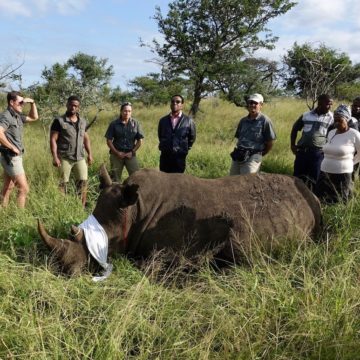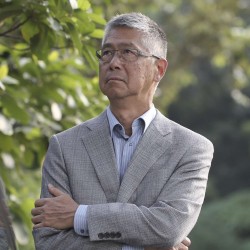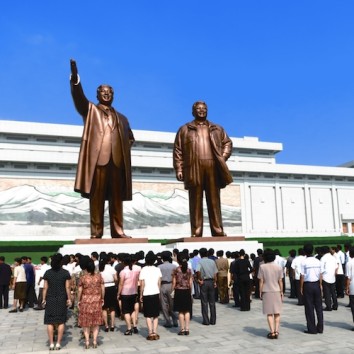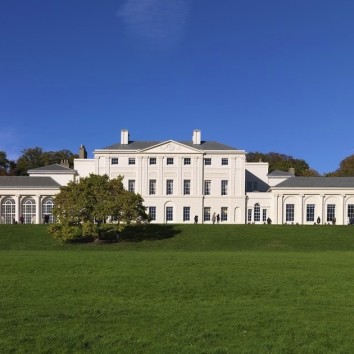
Saving rhinos
— May 27, 2018From surveillance planes to witch doctors, conservationists and park rangers in KwaZulu-Natal, South Africa, are exploring every option in a desperate fight to save its rhinos, whose horns are worth more than their weight in gold

It is just after 2pm on a Wednesday afternoon and a trio of Project Rhino team members are kicking back in the lounge adjacent to their operations room. The armchairs and sofa are covered in camouflage fabric – even here, there’s no forgetting that a war is raging in KwaZulu-Natal: a war on the rhinoceros, funded by Chinese demand for the animal’s horn, which is worth more on the black market than its weight in gold.
KwaZulu-Natal lies in the southeast of South Africa, and the province has the greatest density of the endangered pachyderms in the country, with 21 per cent of the nation’s white rhino and 25 per cent of the black rhino populations.
Project Rhino is an association of conservation organisations, game reserves and security specialists battling poaching across KwaZulu-Natal. Two of its key initiatives are the Zululand Anti-Poaching Wing (or ZAP-Wing), which carries out aerial surveillance, and the K9 Unit, a new venture that employs dogs to track poachers.
When I meet with the Project Rhino team, the ZAP-Wing light aircraft has been grounded by damage to its fuselage, and base manager and pilot Ian Waghorn is waiting for replacement parts to arrive.
“In the two weeks the plane has been out of commission, we’ve seen an increase in attacks,” Waghorn says. “People know we fly around and they know the plane is out of action; news spreads fast here.”
The Project Rhino headquarters is in Hluhluwe, a small town (population: 3,800) in northern KwaZulu-Natal. Local police responsible for rhino-related crime are stationed in an unassuming single-storey building next door. The two teams work together to tackle the increasingly organised syndicates that target animals in the area.
I have been introduced to the team by Truman Ndlovu, acting general manager and security and reserve operations manager at private game reserve Thanda Safari, which lies 30km north of Hluhluwe. Ndlovu has relied on ZAP-Wing not just for weekly surveillance flights to check the reserve’s 92km of perimeter fence, but also to step up if there is an incident with poachers.
Covering some 14,000 hectares, Thanda is a founding member of Project Rhino and sanctuary to what is known as the “Big Five” – the African elephant, Cape buffalo, leopard, lion and rhino, both black and white. Its significant number of black rhinos make it a prime target for poachers.
Since 2012, the South African military has protected Kruger National Park, one of Africa’s largest game reserves, covering two million hectares, located 360km away in the far northeast of the country. While that undertaking has helped reduce poaching at Kruger, it has made private game reserves such as Thanda more vulnerable than ever.
“Rhino poaching has escalated since 2011; every year it gets worse,” says Etienne Gerber, a ZAP-Wing pilot. He glances at his flashing mobile. Waghorn’s phone is pulsing with the same message. “Excuse me,” Gerber says, hurrying away. “Breach, breach. There’s been a breach.”
Within minutes, two police cars containing seven officers are racing to the 17,000-hectare Phinda Private Game Reserve, where the urgent call for support originated, which lies a few kilometres east of Thanda. More dust is kicked up when a private helicopter joins the mission, tracking events from the air and relaying information back to base.
Ndlovu is on the phone to the neighbouring reserve – in a war like this one, it is imperative that allies stick together. He instructs four men from Thanda’s Anti-Poaching Unit (APU) to station themselves at a junction on the road the poachers are likely to use in their getaway.
With one hand on the wheel of his SUV, Ndlovu makes more urgent calls to his team and neighbours as we hurry back to Thanda. A yellow Fiat speeds past, heading in the opposite direction, followed by a second car.
“That’s one of mine,” Ndlovu says, checking his rear-view mirror.
Ndlovu’s phone rings again and he answers. “OK, copy that, false alarm,” he says to the caller, and just as quickly as the drama began, it is wound down. It transpires that a Phinda staff member mistook off-duty contractors for poachers, and the Fiat, travelling at speed, had raised the team’s suspicions. The situation illustrates just how jumpy everyone is.
Ndlovu praises his men for their rapid response. Keeping up morale within a trustworthy crew is essential here because the vast majority of poaching (Ndlovu estimates at least 90 per cent) is carried out with insider knowledge.
“Someone can earn 80,000 rand [HK$50,000] just for giving information, not even getting their hands dirty,” he says.
That figure is just a fraction of what rhino horn is worth to those who most covet it. In China, where it has traditionally been used in medicine, it sells for about US$60,000 a kilo on the black market (with prices being highest for horn from black rhinos) – and the average horn weighs between 2.5kg and 4kg. Multiple scientific studies, however, have found that rhino horn – which is essentially composed of keratin, the same substance that forms human hair and nails – has no pharmacological benefits.
Another of Thanda’s neighbours is Manyoni Private Game Reserve, which covers 23,000 hectares immediately to the north. The facility is the result of 17 landowners dropping their fences in 2004 to create one large reserve. The next day, we drive to Manyoni to speak to its conservation manager, Dwain Strydom, about the challenges of managing such a huge tract of land. But before we are even through the entrance gate, it is clear that he has a significant problem on his hands: a stretch of fencing, which keeps the lions, leopards, rhinos and other wild animals inside, has been pulled down.
We meet Strydom a couple of kilometres into the reserve down a dirt track. He pulls over in his Land Rover and we chat by the side of the public road that cuts through the property.
“Thirty or 40 men from the community tore it down in broad daylight,” he says of the fence. “The two women on the gatepost were terrified. They ran for their lives.”
Ndlovu knows the importance of maintaining good relations with communities that border a reserve. Most of the poaching is organised by criminal syndicates from outside South Africa (“In the beginning it was Mozambique, but we’ve also seen syndicates from Somalia and Zimbabwe,” he says), and they rely on locals for information on animal locations and the security measures in place. “It seems you don’t have the right community liaison officer,” Ndlovu advises Strydom.
His comment is not a criticism: the two men face the same challenges and regularly meet to discuss solutions. When Strydom started at Manyoni, in 2015, he lost two rhinos in the first month. He put the squeeze on staff, subjecting them to a polygraph test (standard procedure at South African game reserves), to find out who leaked information. Some cracked under the pressure and fled. Those who failed the polygraph were fired. In all, more than 10 staff were let go, but even that did not stop Manyoni losing a black rhino at the end of last year.
“There are [in general] few rhinos in that area of the reserve; it had to be an inside job,” Strydom says.
The animal was shot in the side and a routine ZAP-Wing surveillance flight spotted the carcass, its horn brutally hacked off.
“It takes only 10 to 15 minutes to shoot and dehorn an animal,” Strydom says. “Even if we hear the gunshot, by the time we get there [the poachers have] gone. We need early detection, better prevention. When the gun goes off, we’ve already lost the animal.”
Like Strydom, Ndlovu believes technology could be the answer. His wish list includes software that will enable him to access national security databases, so that he can vet potential employees to make sure they do not have criminal records, carry out licence-plate checks and detect mobile phones (unaccounted for phone signals can point to poachers on the property).
Ndlovu is in a pensive mood as we drive away.
“This is a war because it’s not stopping,” he says.
If, indeed, it is a war, then the Thanda APU is Ndlovu’s private army, with 38 of the reserve’s staff of about 200 dedicated to security. They carry light, semi-automatic machine guns – LM5s and LM6s – but may fire their weapons only in self-defence. Bulletproof vests are also essential for encounters with poachers.
“If we didn’t keep up this kind of surveillance, all the animals [on our reserve] would be killed within 10 days,” Ndlovu says.
The APU makes regular patrols of the reserve but avoids working to a routine, to confuse the poachers. Unit members cover 400 to 1,000 hectares on foot every day, all the while watching out for the wild animals.
“We are here to save the rhinos, but if they spot us, they might kill us,” laughs APU ranger Thembe.
And that danger is real. Rhinos have poor eyesight, relying mostly on their hearing and sense of smell. If a human is downwind of a rhino, the animal will not notice his or her presence. But if the wind changes direction suddenly, the rhino will be alerted to potential danger. That’s what happened two years ago, when a rhino charged one of Thanda’s team, spearing him with its horn. The man was seriously injured and has only recently returned to work – with a limp and a metal plate in his knee.
I join the APU on an early morning patrol led by Thembe, and we follow animal trails through the bush. At one point, Thembe says a lion passed by not long before us, pointing to the telltale sign of impala fur in dung the feline has left behind. The grass is wet, waist high in places and also home, he says, to pythons, puff adders and mambas. He leads me through the bush, ducking under thorny branches, to a scrubby patch of ground scattered with the bones of a black rhino killed by poachers a couple of years earlier.
Ndlovu, who has been trained as a crime-scene investigator, has plotted on a map in his operations room the GPS coordinates, as well as the time and date of the killing, for each of the nine rhinos slaughtered by poachers at Thanda between 2011 and 2016.
“I know how to protect the evidence at a crime scene, how to build up a case, how to make a diagram about how the animal was killed,” he explains.
Such training is funded by the government and offered to heads of security at game reserves. This enables them to carry out the groundwork before government investigators arrive to complete forensic analysis, and a vet conducts an autopsy. Such investigations have revealed that while poaching gangs have, as a rule, been from outside South Africa, their infiltration of communities is increasingly resulting in locals branching out on their own.
Samkelo (not his real name) is a contractor for Thanda, tasked with maintaining the reserve’s electric fence, and he comes across rhinos regularly. In 2012, he was offered 20,000 rand for information about where the animals were feeding.
“[The poacher] tried to recruit me,” Samkelo says. “He asked me what I earned, then said that, with my job, I was ‘sitting on money’.”
Samkelo lives with his parents, wife and sister in a community at the reserve’s western border. The armchairs and sofa in the living room are covered in clear plastic and the concrete floor has been swept clean. Samkelo is proud of the fact that his home started to receive electricity two months earlier, and puts on a video of his traditional Zulu wedding – to show off his beautiful wife. But the video is also a ruse.
Samkelo tells his father that I am visiting to learn about Zulu culture. Once the older man has shuffled away, Samkelo recalls how his supervisor advised him to string the poacher along, giving him a fake location of the animals. When the poacher arrived at the spot, he found it well patrolled by Thanda rangers and security vehicles, and was scared away.
Predictably, Samkelo’s relationship with the poacher turned sour, and only intervention by village elders prevented violence, but the relationship remains tense. Some time later, however, that same poacher killed a rhino at Thanda. “He went to the witch doctor and got some strong muthi,” says Samkelo, citing the traditional medicine of South Africa. Poachers invariably visit a sangoma, or medicine man, before a hunt. We are deep in Zululand, and witch doctors and black magic are central to the local culture.
Once back on the main road, Ndlovu and I meet with Eric Dickson, coordinator of Project Rhino’s K9 Unit. He has trained his three-year-old Belgian Malinois, called Mali, to sniff out rhino horn, weapons and ammunition.
“I’m not doing this for the money, I’m doing it for the love of the rhino,” Dickson says.
And he is keen to show what Mali can do. Rhino horn shavings have been hidden in a truck nearby and Mali is led around the vehicle. At a back tyre, the dog starts whimpering, and Dickson reaches under the chassis to reveal the bag of rhino horn. Mali is rewarded with a treat and a red ball.
“I’ve been working in nature conservation for 26 years. I saw a need for this service in Zululand because of the increasing poaching,” Dickson says, and as if on cue, his phone rings. Two leopards have been poached and his help is requested to track down the culprits.
The K9 Unit, ZAP-Wing, Thanda APU and local police are all dedicated in their work, but rhinos are still being killed. A controversial strategy to stop their possible extinction is dehorning. Although Thanda chief executive Pierre Delvaux is opposed to the procedure, when neighbouring reserves dehorned their animals he was left with no choice but to follow suit because not doing so would have made Thanda a target.
“All this has done is create a level playing field,” Delvaux says, also pointing out that dehorning is extremely costly. “Everyone is making money in this except the rhino owners.”
It costs, in fact, about 30,000 rand to dehorn a rhino; more if there are complications. Much of the cost goes on the helicopter needed to track the animal, and on the team of four to six vets required.
I witness a dehorning while at Thanda. The subject – selected by rhino monitors Daniel and Domio – is a female white rhino that tends to stay close to the reserve’s perimeter fence. The aim is to send a message to poachers: don’t come here; we dehorn our animals.
The monitors begin by following the animal’s tracks and its midden, or dung. Daniel and Domio track rhino day in, day out – to maintain a log of all the animals on the reserve. Such information is extremely valuable to poachers. “If an animal is killed, we’d be the first to be polygraphed,” Daniel admits.
The monitors’ Land Rover has no doors, making it easy to spot the animal’s tracks on the dirt road. Domio, with more than 30 years of tracking experience, notices where an animal has sprayed its urine, marking out territory. Another five minutes along the road, and Daniel spots fresh rhino midden, which he picks up.
“Feel it. It’s still warm. We’re close,” he says.
We watch our footsteps, careful not to trip on the loose rocks or dry branches that cover the bush floor. Domio points to what looks like a large boulder through the bushes. It’s the rhino we are looking for, and one of the red-billed oxpeckers perched on its back spots us, cawing a shrill alarm call.
The boulder rises. Its ears twitch. We freeze.
It is one thing to know that the rhino has poor vision, and that we are downwind from it and so effectively invisible, but being just 15 metres away from the two-tonne beast is disquieting. Other animals know we are there: eight giraffes stare down at us and a herd of impala moves slowly away. The rhino settles down and we move closer, close enough to read the tags on her ears (and close enough, if we were poachers, to shoot her with ease): she is C18, a female white rhino. Domio notes her GPS coordinates.
The next morning, a helicopter carrying Dr Trevor Viljoen, from Mtubatuba Veterinary Clinic, heads to the same spot and it is not long before C18 is located once again. The chopper is used to scare the animal into an expanse of grass, away from any hazards, and Viljoen shoots her with a tranquillising dart loaded with etorphine (M99), a semi-synthetic opioid thousands of times stronger than morphine.
“She’s a very big target; she’s hard to miss,” says Viljoen, who needs just one shot.
The team on the ground moves in and positions the unconscious C18 so that her head is on slightly higher ground. It takes a rope and six men to shift the patient, which they blindfold, also plugging her ears, before front and back horns are removed with a reciprocating saw, being careful not to cut too low so that the horn can grow back healthily. Sparks fly and there is a powerful smell like burning hair.
The reigning king of the Zulu nation, Goodwill Zwelithini kaBhekuzulu, also attends the dehorning, his first. In dark sunglasses and carrying his trademark cane, he stands to the side looking solemn.
“The rhino are like my children,” he declares. “Once they are all killed, will people still want to come to South Africa?”
Like Ndlovu, the king believes those charged with caring for the animals are frequently the people who betray them for personal gain.
“It’s an inside job, always an inside job,” he complains.
However, building and maintaining an incorruptible team is a difficult task, as Ndlovu admits, and requires unbending resolve. In 2016, after losing nine rhinos in five years, he dismissed eight staff, most of whom had failed polygraph tests. Thanda has not lost a rhino since.
“It was hard firing those men,” Ndlovu says. “I know they all have children to support, but I had to do it. If you find out that one of your rangers is a rat, then you are compromised.”
Determined to do whatever it takes to keep the reserve’s rhino safe, Ndlovu reasoned that if the poachers were paying medicine men to keep them safe, perhaps he could invoke similar spiritual protection for the pachyderms.
After a rhino was killed on May 5, 2014, Ndlovu went to see a sangoma in Manguzi, near the border with Mozambique. The medicine man mixed a sample of the dead animal’s stomach contents with herbs, needles and razor blades. Within a matter of days, one of the Thanda rangers had disappeared.
“He went AWOL for some time,” Ndlovu says. “After a few weeks, one of my men ran into him in town. The AWOL guy said, ‘This Truman is very clever. He almost got me killed.’”
Later, Ndlovu learned that the ranger who fled went to a medicine man to reverse the sangoma’s spell. Ndlovu has visited that same medicine man three times, the last being in April. The sangoma gave him muthi that Thembe then buried in four strategic locations around the perimeter of the Thanda reserve.
The visits also allowed Ndlovu to find out more about the services provided to poachers. For about 10,000 rand the sangoma will offer a blessing and advise whether a hunt is likely to be successful based on location and those involved.
“The sangomas should be charged when an animal is killed,” Ndlovu says. “They know the details of the crime before it happens. They are accomplices.”
In the six days I spend at Thanda, three rhinos are killed for their horns within 10km of the reserve. It is almost certain those horns are destined for China.
In the face of such slaughter, and with the rhino’s extinction a real possibility, Ndlovu’s willingness to try all options available, no matter how extreme or bizarre, makes sense, so I, too, arrange to meet with his sangoma.
Having initially agreed to see me, in the days before our arranged meeting, the medicine man stops answering calls from Ndlovu, so together we make the two-hour drive to Manguzi in the hope of finding him. While there are only about 25,000 trained doctors in all of South Africa, there are an estimated 200,000 sangomas. The vast majority offer traditional healing with herbs, but some practise black magic as well.
It is close to dusk when we reach the medicine man’s small stone hut, its corrugated iron roof held down with rocks. There is an old-fashioned pump to fetch water from the ground; chickens scrabble in the dust.
Ndlovu’s horror stories of sangomas buying human albinos to use in their witchcraft have left me unnerved, and as I step out of his SUV, a black kitten wraps its tail around my leg. Although no one appears to be home, I get the sense we’re being watched.
“This is where I met the sangoma last time. He laid out his herbs on the ground,” Ndlovu says.
The black kitten follows me as I look around, and I feel like I am intruding. When I turn to leave, I catch my leg on a bush, a thorn piercing the thick fabric of my trousers and breaking the skin, and I’m spooked: the medicine man does not want me here.
The sun sets quickly in South Africa and it is dark by the time we begin the drive back to Thanda. Ndlovu shows me the nicks on his wrists, where the medicine man cut him and spread herbs that mixed with his blood to make him stronger.
“This is a war,” Ndlovu says of his and Project Rhino’s ongoing battle to save KwaZulu-Natal’s endangered wildlife. “If there’s a chance that it might work, then we’ll try it.”
Original Link: SCMP









